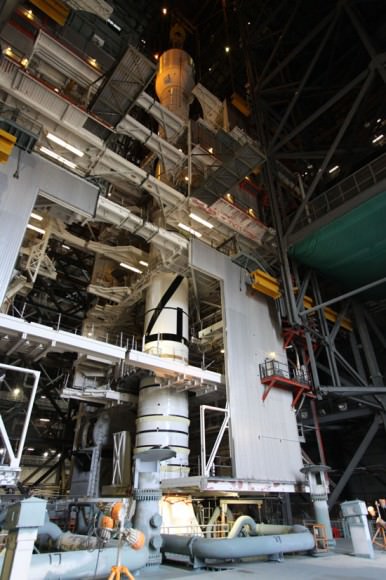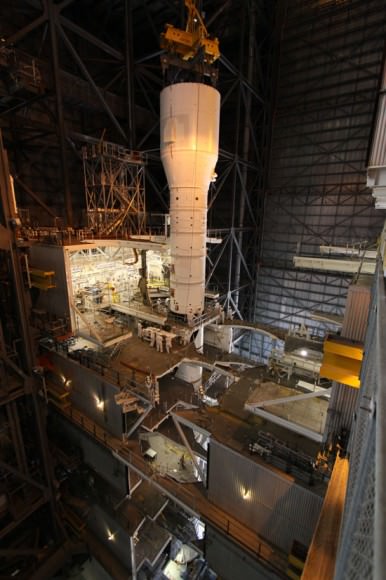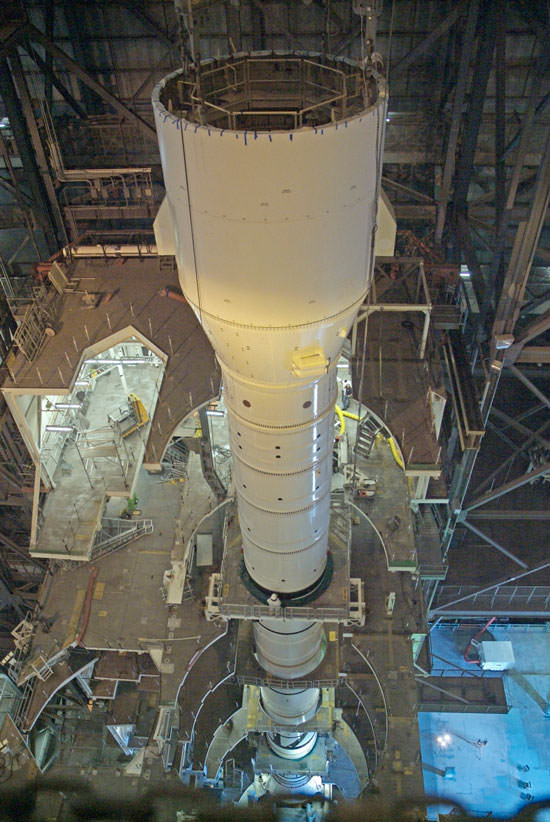Here is a very nifty time-lapse video of what it took to put together the Ares I-X test vehicle, which will launch next month to test out NASA’s newest family of rocket. The big news is that NASA has actually moved up the date for the launch to Tuesday, October 27 from the original date of October 31. The new date is pending successful testing and data verification.
Continue reading “Build the Ares I-X in Less Than Six Minutes”
Ares I-X Comes Together (and it is BIG)
[/caption]
The Ares I-X rocket is being stacked on the Mobile Launch Platform in NASA’s Vehicle Assembly Building in preparation for the rocket’s first test flight, scheduled for October 31, 2009. The “super stack 1” was mated to the forward motor segment, and the rocket — which will stand at 99 meters (327 feet) — is now more than half way assembled. Assembly is done using a massive overhead crane, specially adapted for I-X use.
For comparison, the space shuttle stands at 56.1 m (184 ft), the Saturn V rocket was 110.6 m (363 ft), and the Ares V will be 116 m (380 ft) high.
See more images of the rocket below.

According to NASA’s Ares Blog, super stack 1 is composed of the fifth segment simulator, forward skirt, forward skirt extension, frustum and interstages 1 and 2. It also includes two internal elements – the roll control system and the first stage avionics module – as well as the parachute system housed in the forward skirt extension.
The Ares I-X flight test will provide NASA an opportunity to check and prove hardware, analysis and modeling methods, and facilities and ground operations needed to develop the Ares I, which currently is NASA’s next crew launch vehicle. However, President Obama has assembled the Augustine Commission to evaluate the Ares rocket and the entire Constellation Program to determine if NASA should continue on its current path.
The test also will allow NASA to gather critical data during the ascent of the integrated stack, which will help inform the design of the Ares I rocket and the Orion crew exploration vehicle. The data will ensure the entire vehicle system is safe and fully operational before astronauts begin traveling in it to the International Space Station and moon.

Over the next month, four more super stacks with the final pieces of hardware (including the simulated crew module and launch abort system) will be mated, finishing off the stacking operations for the rocket.
Source: Ares Blog

